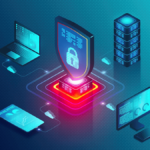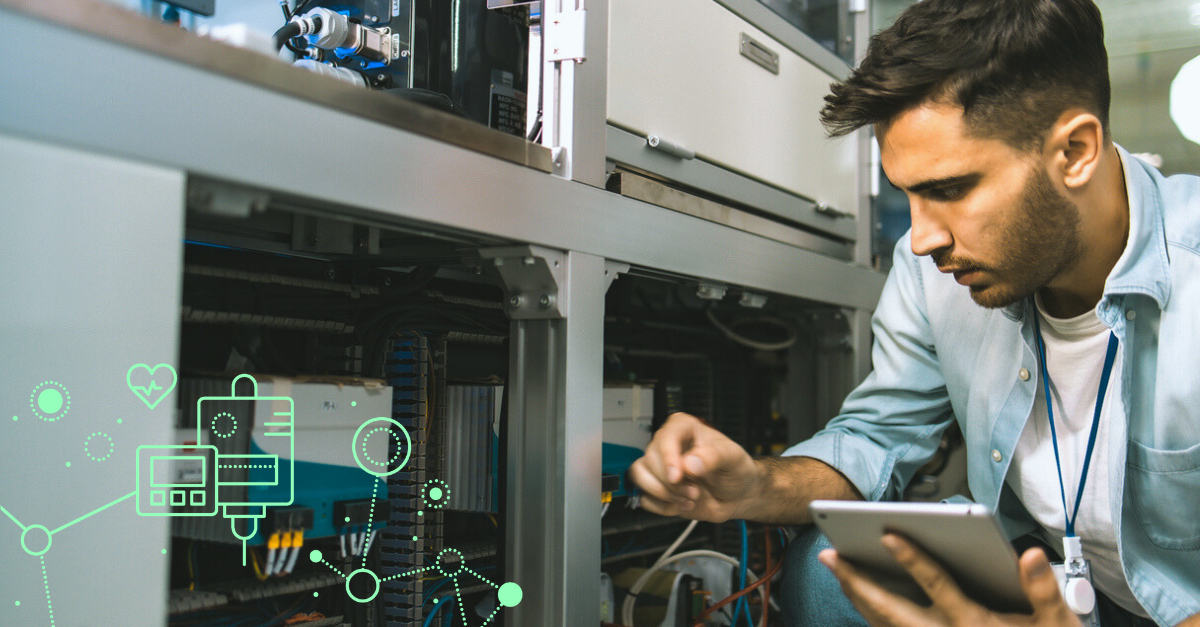7 Reasons Why Healthcare is the Biggest Target for Cyberattacks

Based on 2021 research, healthcare information is the most targeted type of data. Even in 2023, healthcare remains the #1 target for hackers and cybercriminals. In 2022, medical data breaches increased by 94%, the worst year in nearly a decade. 2023 is expected to be no different than past years.
Why is healthcare the primary target for cyberattacks? What makes healthcare organizations more vulnerable to data breaches? And what can be done to stop these hackers from stealing sensitive patient information?
In this post, we will address these common questions and discuss the possible reasons the healthcare industry is so vulnerable.
Why is Healthcare a Prime Target for Cyberattacks?
The healthcare sector is currently in a precarious position because new technologies have been continuously increasing the success of outcomes, with the latest resources, technological medical devices, and remarkable consistency. However, this technology transformation has seen a shift in the number of devices on a network, inviting new opportunities for cybersecurity threats and increasing the vulnerability to attack.
Healthcare IT organizations are significantly underfunded when it comes to security budgets while also having zero tolerance for system downtime. A single cyberattack can cause a 20% increase in mortality rates. In fact, in 2021, a baby in Alabama died due to a ransomware attack at the hospital she was born in. Because it is so simple to gain access to these networks and healthcare organizations are willing to pay to get their access back quickly, the healthcare sector has a target on its back.
There are many other reasons behind what makes healthcare an appealing target for cyberattacks. As a patient or provider of a health organization, you should be aware of the reasons cyberattacks against healthcare organizations are more likely.
Below, we will review the top seven reasons why healthcare cyberattacks have become more susceptible. Reviewing these top factors will help you better understand cybersecurity threats and why cybersecurity training, awareness, and protection are so critical in the healthcare industry.
1. Private Patient Information can be a Big Pay Out for Hackers
Health records and other patient-related information are vital to the operation of a healthcare facility and also entices some of the best hackers looking to make a large sum. This sensitive data is in high demand on the black market and many hospitals opt to pay ransoms given the life-or-death stakes they often face.
With healthcare organizations having extraordinary storage of and access to all of a patient’s information, hackers view healthcare organizations as prime targets for their black market payday and cyber-business objectives. Ransomware attacks impacted 66% of healthcare organizations in 2021, a steep increase from 2020. The average cost of a medical data breach in 2022 was $10.10 million. While this can cause immediate financial pain, the consequences of a breach could last years.
As GDPR becomes an integral factor this year outside the United States, the financial impacts of health data exposures and breaches will become more essential for hospitals as they are already struggling with the financial strain of operating under the constraints of a global pandemic every day.
Because of the prevalence of patient-related information, medical record security is a primary concern for persons working in the healthcare industry. It is the responsibility of every healthcare organization to keep their patient’s records secure from cyberattacks.
2. Healthcare Staff are Often Unprepared to Deal with Cyberattacks
To increase healthcare cybersecurity resilience and minimize cyber risks, medical professionals across the organization should be familiar with, and receive recurring training, on the cybersecurity threats they are likely to confront. However, competing priorities and time limitations make it challenging to educate and familiarize medical staff with cyberattacks and malware.
Educate all staff members, so they are familiar with basic online protection best practices to minimize cyberattacks. Below are some of the bare minimum cybersecurity practices every staff member should know.
- Beware of external emails with attachments or links
- Only share patient information over secure methods with known business entities
- Never share personal information or your password
At a basic level, the staff should understand medical devices may interface with other systems, and these interconnected devices and systems create additional risks, which they must be able to identify. Fully educating your staff about cyberattacks means adding additional layers of context to training, so security across the organization becomes part of the cybersecurity defense system.
3. Legacy Technology and Tight Budgets in Healthcare Systems Limit Resources
For all the remarkable advances in medical innovations over the past decade, not every aspect of the healthcare industry has kept pace. Many health systems maintain outdated technology because of financial constraints.
The latest technologies and software updates may provide bug fixes to keep systems reasonably secure and generally enhance device cybersecurity in other industries. However, with medical devices, the regulatory nature and software development cycles can’t keep pace with the escalating vulnerabilities in the healthcare environment.
Health systems must continually adapt and respond to cyber threats aimed at their connected medical devices and systems to keep their data information secure. Meeting this challenge is only possible if health systems adopt the latest technologies focused on medical device security challenges of vulnerability and threat management and have the people to deploy and manage these systems, which adds even further constraints to their limited budgets.
4. Connected Medical Devices can be Network Entry Points for Attackers
In a healthcare system, medical device cybersecurity is a critical factor, which can’t be ignored because medical devices are an easy entry point for attackers. Medical care and medical device innovations ensure that more devices will be on our healthcare networks next week than there are today. In fact, the healthcare industry has a device churn rate of 15% per year, the highest in any industry, but these devices and innovations are often designed without keeping cybersecurity in mind.
Medical devices, such as x-beams, insulin pumps, and implantable defibrillators, can all be accessible via a network and assume a necessary part of routine medical care. These devices may not be an attacker’s intended target for network access, but, with little to no security, the medical device may serve as the entry point to launch an attack on servers or other networked assets that hold crucial (and financially rewarding) information.
If hackers can get access to a medical device, they can prevent a health system from providing care and treatment to patients.
5. Broad Use and Sharing of Healthcare Data Creates Opportunity for Attackers
In the healthcare industry, any connected devices may collect, transmit, and/or collect protected patient information, both on location instantly and distantly on supporting medical devices and systems. Generally healthcare data is broadly shared across the organization, partnerships, devices, and systems to provide the best outcomes to every patient. However, connecting medical devices in a network can broaden the hacker’s attack surface and create additional risk to the organization, as not all devices may be secure.
Many existing (i.e. legacy) devices present an additional challenge as security and risk were not any part of a pre-purchase assessment and all efforts to secure the device(s) become a post-sale, customer-driven effort. Purchasing future devices from reputable manufacturers can provide medical device lifecycle management services and programs to address risk and software support over time. These companies may also support the healthcare staff to identify and address the risks of a given device upon the user, patient, and operations.
6. Cyber Security Isn’t a Top Priority of Healthcare Staff
Most health systems today have an extensive network of medical devices that are responsible for managing all the associated patient information that may be collected, transmitted, and/or stored.
As the size of a health organization increases, the range and number of connected devices on the network also typically increase. Each connected device increases organizational risk and acts as a potential threat vector for cyber-attackers.
Clinical staff are often preoccupied with performing their daily duties with minimal cyber risk awareness, particularly as it relates to the connected devices used in daily patient care. Most commonly, healthcare systems implement cybersecurity practices with information technology and security subject matter experts focused on securing the network against vulnerabilities, exploits, and cyber-attack impacts.
7. Small Healthcare Organizations are Vulnerable
Like big healthcare systems, small healthcare systems are equally vulnerable to cyberattacks, but the reasons for both aspects are different. Large organizations hold a large amount of data; that’s why attackers find them a primary target.
Often, small health systems (e.g. critical access, rural locations) have a small security budget and don’t have the budget, resources, or staff to support the institution internally and cannot afford to outsource healthcare cybersecurity company or IoT cybersecurity company to support their organization to reduce risks from cyber threats or attacks.
It does not matter whether a healthcare system is large or small; both manage sensitive patient data and are constrained by the previously discussed issues of data and medical technology risks, both require cybersecurity protection from cyber threats.
Conclusion
Health systems, their interconnected business relationships, and their diverse workforce collect, store, and store an abundant amount of sensitive and personally protected healthcare information data.
This information presents as a valuable target for cyber attackers due to its monetary and demand on the black market. Once this information is in the public sphere it can be sold, misused, and abused in various ways, so you need to be protective about your healthcare data.
This blog has listed possible reasons healthcare systems are often targets for cyber attackers. Being aware of these factors and influences we can better understand the importance and need for medical device risk management programs and healthcare cybersecurity awareness overall.
Asimily is a healthcare cybersecurity service provider with focused security solutions for procurement risk assessments, threats protection technologies, and staff training courses that can help you protect your organization from cyber-attacks and grow in the years to come.
To learn more about Asimily, download our IoT Device Security in 2024: The High Cost of Doing Nothing whitepaper or contact us today.
Reduce Vulnerabilities 10x Faster with Half the Resources
Find out how our innovative risk remediation platform can help keep your organization’s resources safe, users protected, and IoT and IoMT assets secure.




